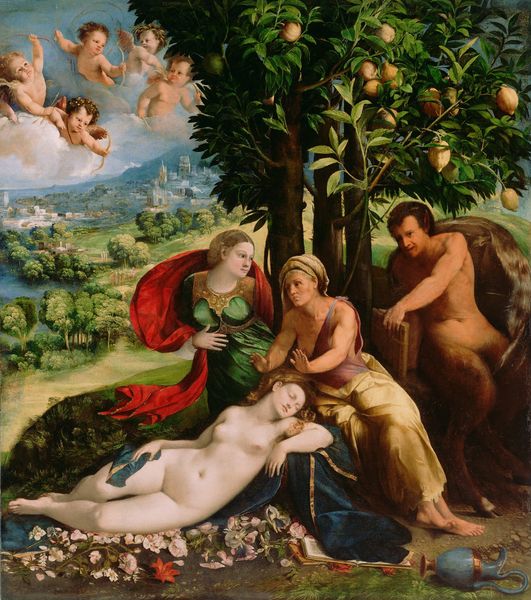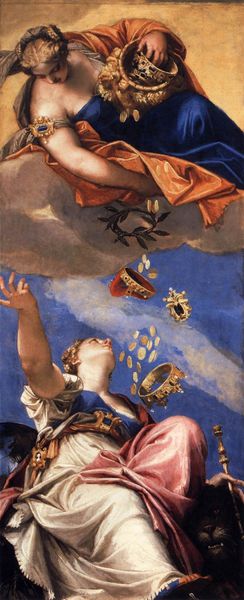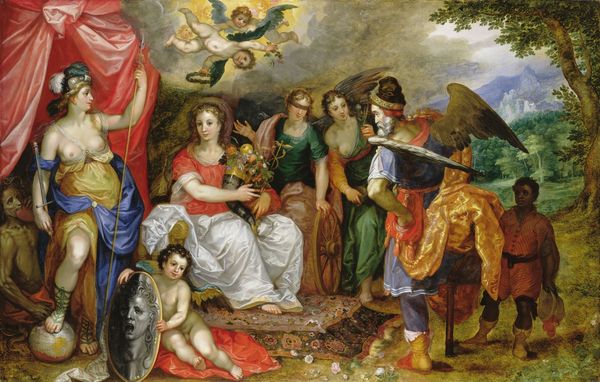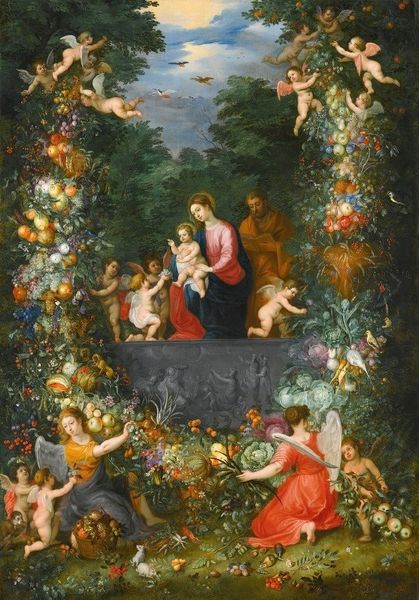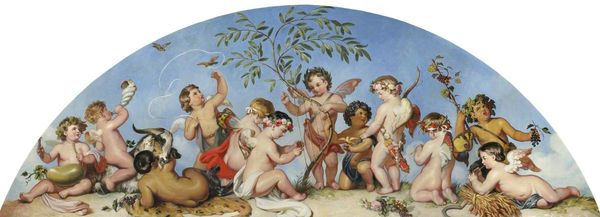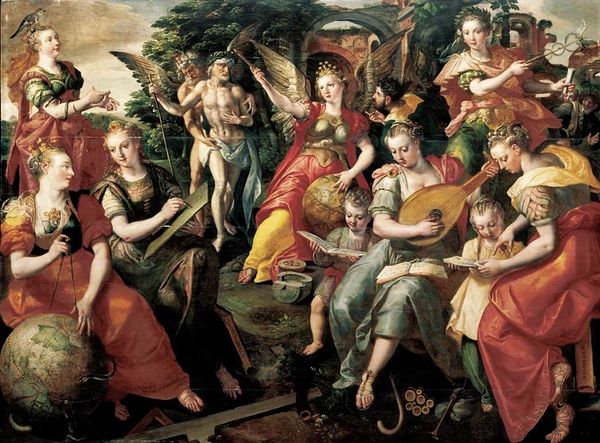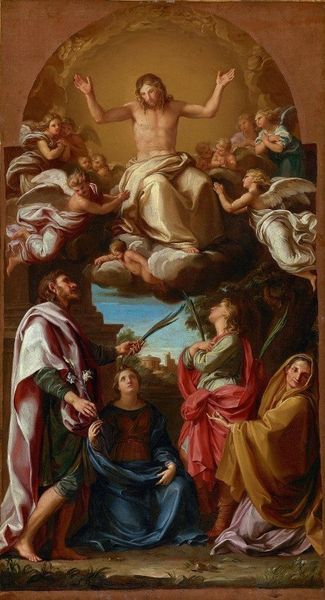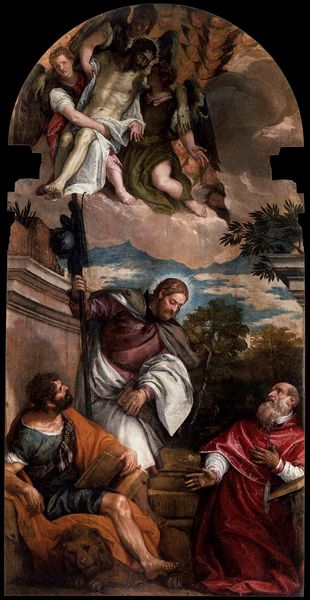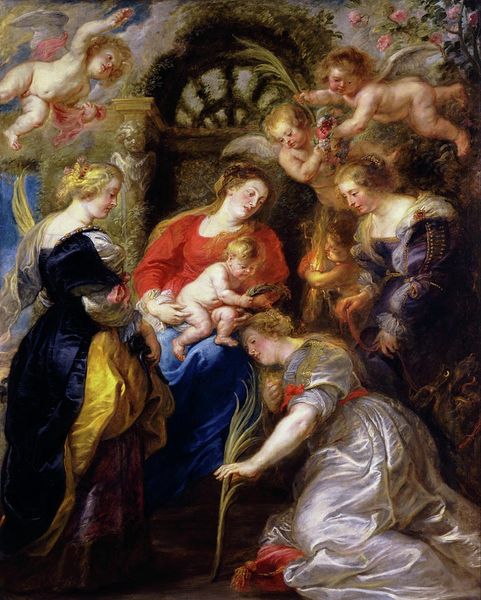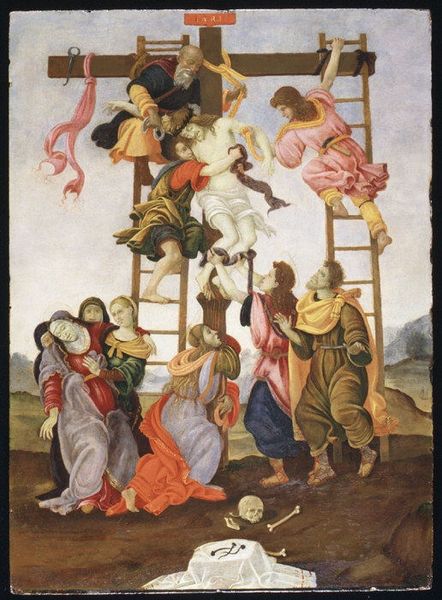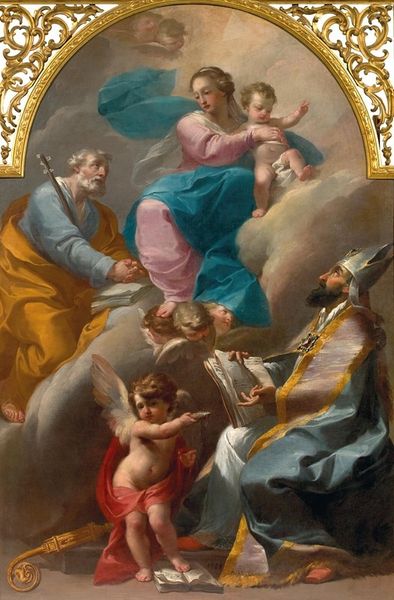
oil-paint
#
portrait
#
allegories
#
high-renaissance
#
allegory
#
symbol
#
oil-paint
#
figuration
#
oil painting
#
mythology
#
history-painting
#
italian-renaissance
Dimensions: 148 x 88 cm
Copyright: Public domain
Curator: This painting, rendered in oil paints, is titled "Allegory of the Virtues". Created around 1530 by Correggio, a prominent figure of the Italian Renaissance, it currently resides at the Louvre Museum in Paris. Editor: It strikes me as almost cloyingly sweet, a saccharine concoction of soft flesh tones and hazy forms. It verges on being baroque but restrains itself... barely. Curator: Well, consider how the formal elements contribute to its effect: the asymmetry of the composition, how the lower grouping, dominated by weighty female forms, is offset by the buoyant cluster of putti above. The diagonal axis creates dynamic tension across the picture plane. Editor: But that's exactly my point! All those swirling bodies, seemingly haphazard but actually meticulously arranged—they’re there to illustrate virtues. Take the lion—traditionally, a symbol of strength, of fortitude—and the winged children floating above; surely, love, divine grace. It's all laid on rather thick, wouldn’t you say? Curator: Iconographic readings aside, observe the interplay of light and shadow. The sfumato, a subtle blurring of lines, lends a soft, ethereal quality, enhancing the emotional resonance of the piece. Editor: I read the softening of lines as an attempt to obscure what is obvious; each figure represents moral concepts familiar to Renaissance patrons. It served as more than just art; its symbols reflected social values. It gave tangible shape to ideals. Curator: Agreed. It's intriguing how Correggio blended High Renaissance ideals with a pre-Baroque sensibility, prefiguring artistic developments that would fully bloom later in the 17th century. He masterfully created depth with linear perspective. Editor: I find it fascinating how even in idealized settings and using standard figures of speech, we see reflection and continuity. These representations helped to forge an understandable system and promoted harmony. This allegory remains an invitation into a world of beliefs. Curator: I think both of our analysis proves just how the artwork engages, decades, even centuries, later in all their formal elegance. Editor: And reminding us of ideals once held close.
Comments
No comments
Be the first to comment and join the conversation on the ultimate creative platform.
